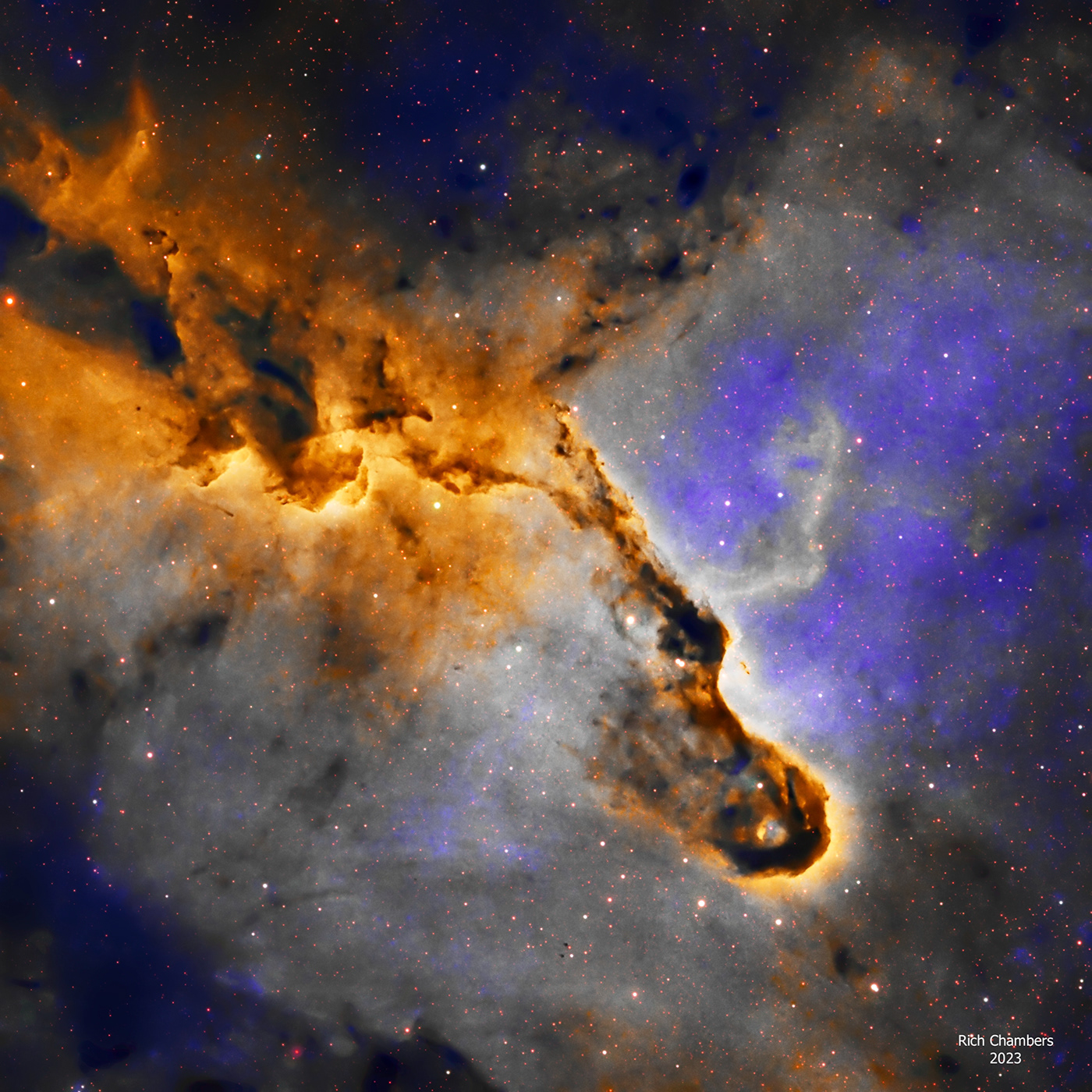The Elephant's Trunk Nebula is a concentration of interstellar gas and dust within the much larger hydrogen alpha ionized gas region IC 1396 located in the constellation Cepheus about 2,400 light years away from Earth. The piece of the nebula shown here is the dark, dense globule IC 1396A; it is commonly called the Elephant's Trunk nebula because of its appearance at visible light wavelengths, where there is a dark patch with a bright, sinuous rim. The bright rim is the surface of the dense cloud that is being illuminated and ionized by a very bright, massive red star (Mu Cephei, also known as Herschel's Garnet Star). The Garnet star is the largest and brightest star in the SE corner of the wide-field image. The entire IC 1396 region is ionized by this massive star creating the red color, except for dense globules that can protect themselves from the star's harsh ultraviolet rays.
Mu Cephei is a red supergiant or hypergiant star. It appears garnet red and is located at the edge of the IC 1396 nebula. Since 1943, the spectrum of this star has served as a spectral standard by which other stars are classified. Mu Cephei is visually nearly 100,000 times brighter than the Sun. It is also one of the largest known stars with a radius around or over 1,000 times that of the sun, and were it placed in the Sun's position it would engulf the orbit of Mars and Jupiter.
The Elephant's Trunk Nebula is now thought to be a site of star formation, containing several very young (less than 100,000 yr) stars that were discovered in infrared images in 2003. Two older (but still young, a couple of million years, by the standards of stars, which live for billions of years) stars are present in a small, circular cavity in the head of the globule. Winds from these young stars may have emptied the cavity.
The wide-field, annotated image was taken with a William Optics Redcat OTA with a 250-mm focal length and processed to highlight the ionized hydrogen gas (red). The two closeups were taken with a William Optics FLT132 OTA with a 900-mm focal length and processed to highlight the ionized hydrogen gas (red) and the ionized Sulfur II and Oxygen III using a faux Hubble Palette.



Thanks so much for viewing and have a great day :)
